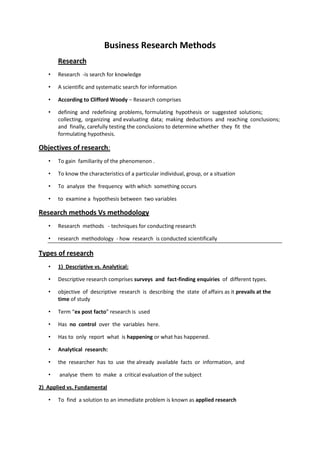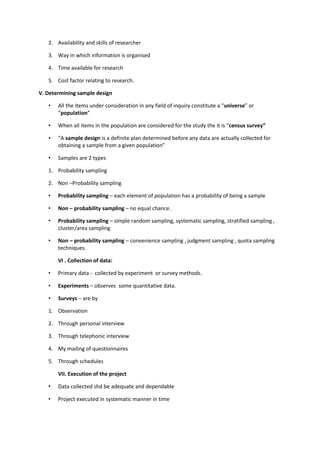The document discusses business research methods and provides details on:
1) The objectives of research including gaining familiarity with phenomena and analyzing frequency.
2) The differences between research methods, which are techniques, and methodology, which is the scientific process.
3) The main types of research including descriptive vs analytical, applied vs fundamental, quantitative vs qualitative, and conceptual vs empirical.
4) The steps in the research process from formulating the problem to preparing a report.
















